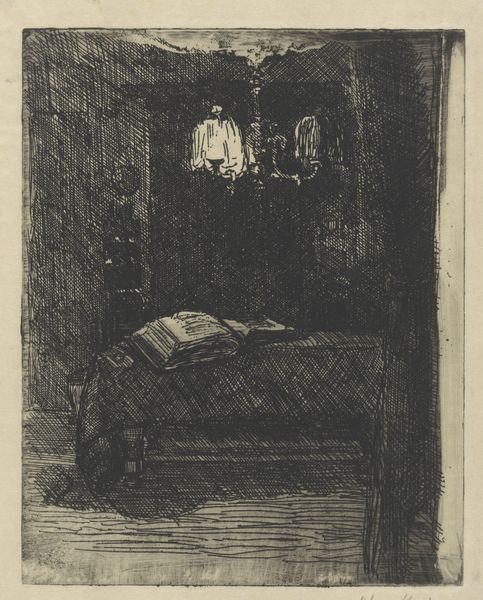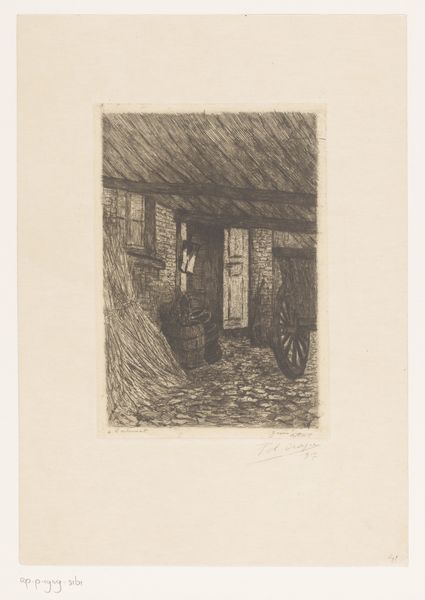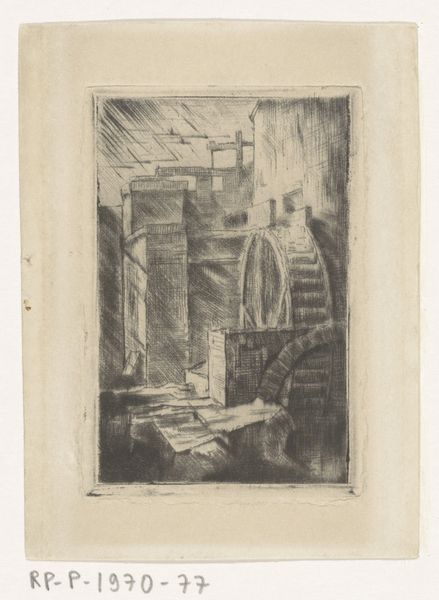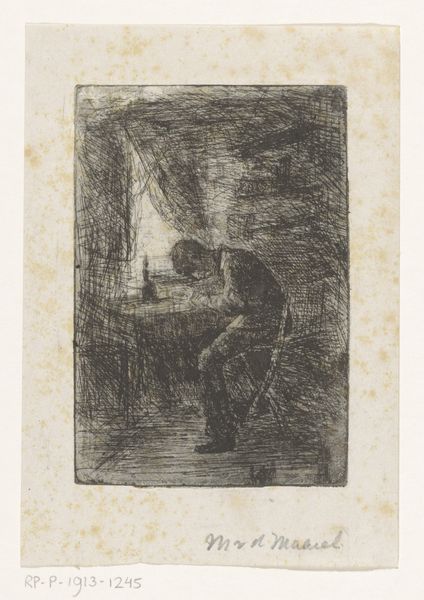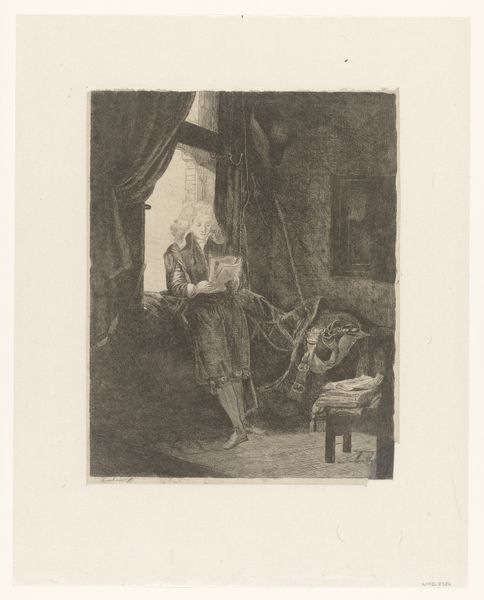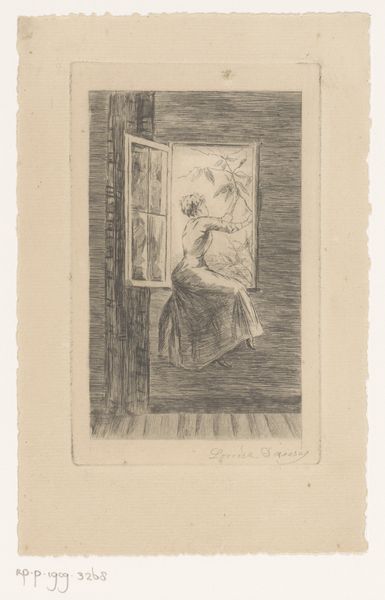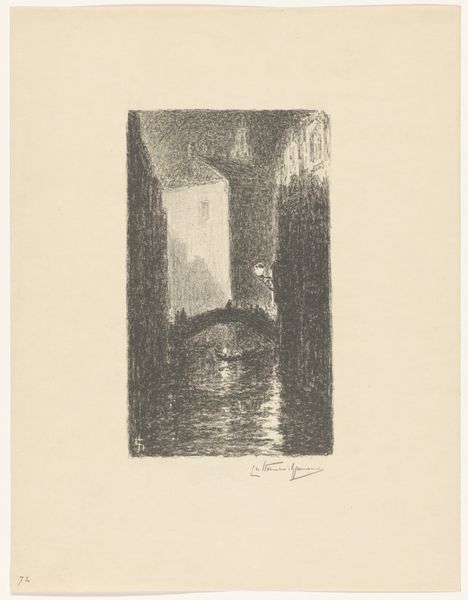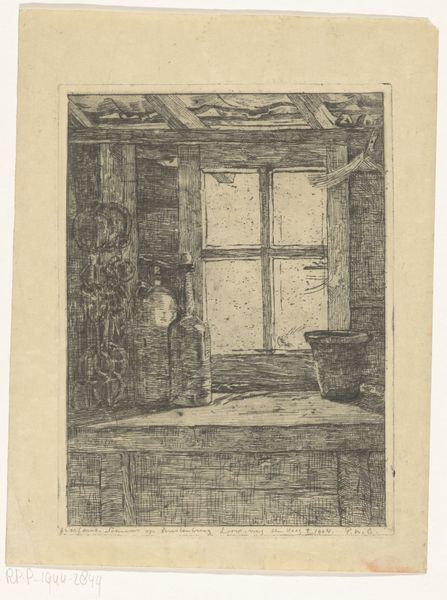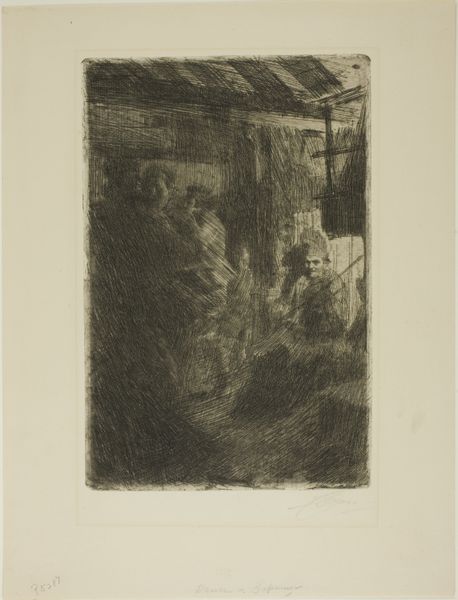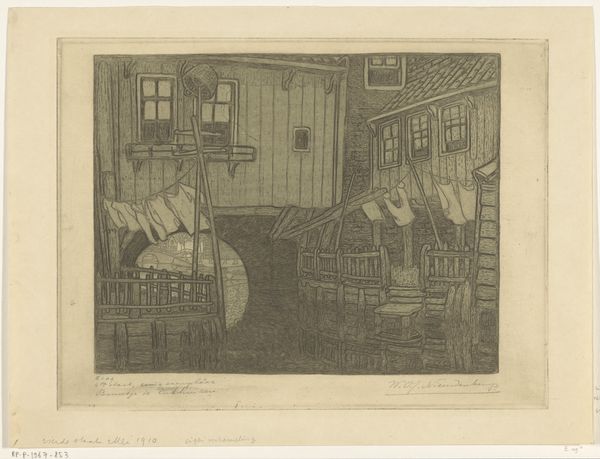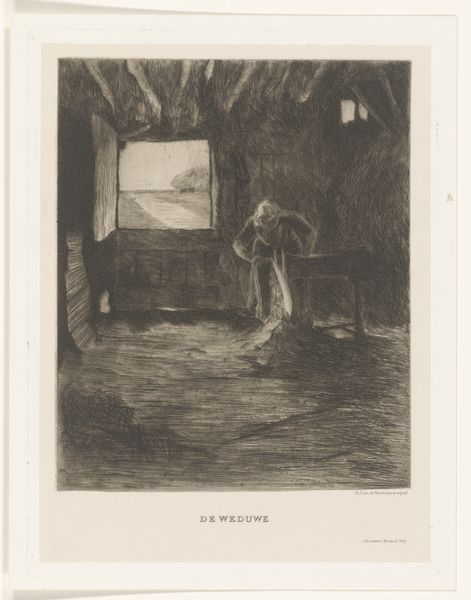
print, etching
#
portrait
#
dutch-golden-age
# print
#
etching
#
genre-painting
#
realism
Dimensions: height 140 mm, width 98 mm
Copyright: Rijks Museum: Open Domain
Editor: Here we have "Woman by a Tub" by Simon Moulijn, created in 1889. It’s an etching, so a print. It has quite a somber tone to it, almost stark, really focusing on this lone figure in a very dark setting. What strikes you when you look at this, and how would you interpret it? Curator: It's fascinating how Moulijn captures this everyday scene. Consider the historical context: genre paintings depicting the lives of ordinary people gained prominence in Dutch art, reflecting societal values. It makes me think about who was this art for? Was Moulijn aiming to portray a romantic vision, a harsh reality, or perhaps something in between? Editor: That's a good question, it does look pretty bleak, not particularly romantic. I suppose documenting everyday life doesn’t necessarily mean glorifying it. Curator: Exactly! Also, notice the distribution and directionality of light in the print and how the dark tones dominate? Consider what public role the imagery would take at the time, the place of labour, and what social commentary can be gathered from that contrast of light and shadow. Do you think this contrast conveys dignity, or maybe something else? Editor: I think dignity is certainly there. She’s not idealized, it feels very honest. It also reminds me how rarely we see these images of women in art at that time without some type of filter. Curator: That’s very astute of you, yes! Etchings like this served a different function to those typical portrait commissions. It brings up some interesting discussion points about how realism gains importance when immortalizing labor, which speaks volumes about a specific time. Thank you for helping me see the layers of public history. Editor: Absolutely! I’ve definitely learned so much about the role this piece had in depicting everyday life, and understanding how realism, as a style, became a very important commentary during that time.
Comments
No comments
Be the first to comment and join the conversation on the ultimate creative platform.

